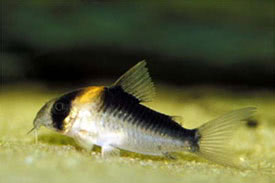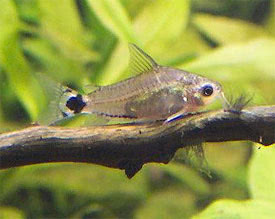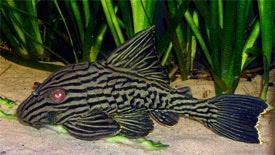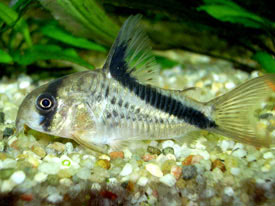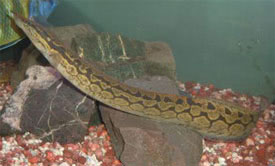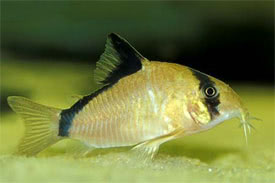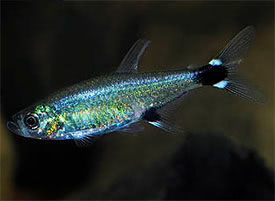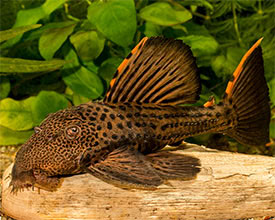
 Magyarul / Hungarian
Magyarul / Hungarian


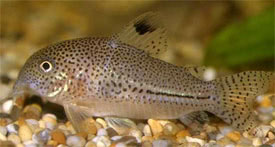
- Scientific name: Corydoras julii
- Common name: Julii Cory, Leopard Cat, Leopard Cory
- Group: Catfishes
- Habitat: South America; Brazil
- Size: 5,5 cm
- Biotope: Inhabits in the lower Amazon in small tributaries over the sandy substrate.
- Social behavior: Very peaceful schooling catfish and will do well in a community aquarium. Don’t keep with large or agressive fish.
- Diet: Omnivorous; Frozen, live and dried foods.
- Breeding: Quite hard
- Tank: Minimum 80 litres
- Population: 6-8 fish for 90 litres
- Decoration: Use river sand or fine gravel as substrate. Decorate the tank with driftwood or twisted grape roots. A few dried leaves are essential if we want to mimic their natural habitat. Also a small bag of peat is recommended to simulate blackwater. Use dim lighting.
- Temperature: 23-26°C
- pH: 6-7.2
- Hardness: 2-15 NK°
- Lifespan: 5-10 years
Description: This fish has a silver body with lots of black dots, which are sometimes interconnected. It also has a row of connected dots on each side of the body and there is a black mark on the dorsal fin. Corydoras julii has a very similar pattern to Corydoras trilineatus, but their head pattern is different: C. julii has distinctive black dots on its head, while C. trilineatus has more reticulated pattern. Corydoras julii is quite rare in the hobby. There are usually no aquatic plants in their natural habitat, only a layer of dried leaves on the sandy substrate. In the aquarium these dried leaves should be removed in every few weeks so they don't rot and foul the water. Corydoras julii is sensitive to poorly maintained water or dirty substrates.
Females are noticeably rounder and broader bodied when viewed from above. Can be bred in a similar way to many other Corydoras species: use soft water and breed them in small groups, with 2-3 males for a female. Feet them with live and frozen foods, and when the female is full with eggs do a 50% water change with cooler water and increase the flow in the tank. The fish will usually lay their eggs on the tank glass, often in an area where water flow is quite high. Remove the parents as they may eat the eggs. The eggs hatch in 3-5 days. Feed the fry with small live foods. The fry grow relatively fast in a larger tank.




























